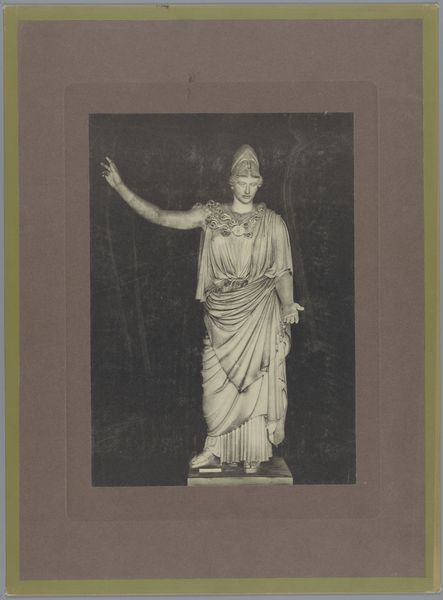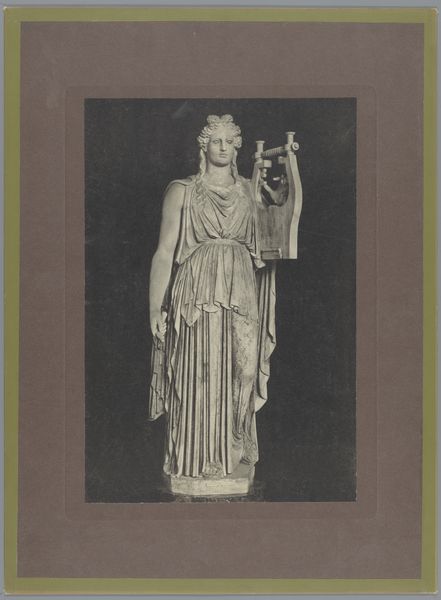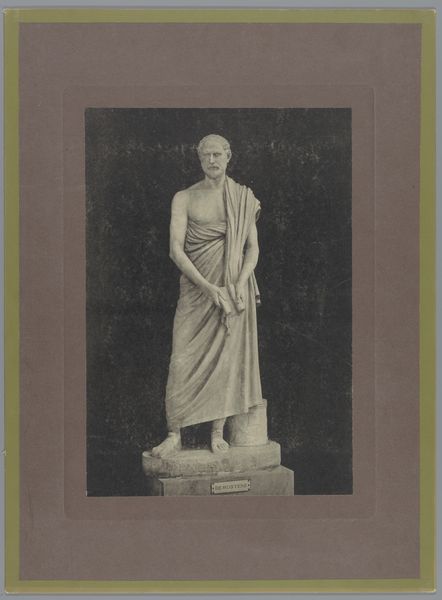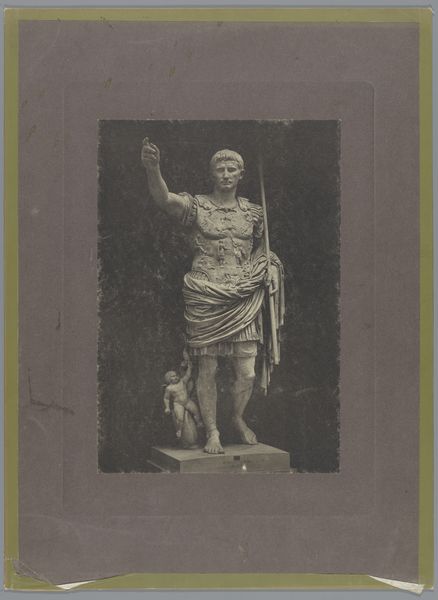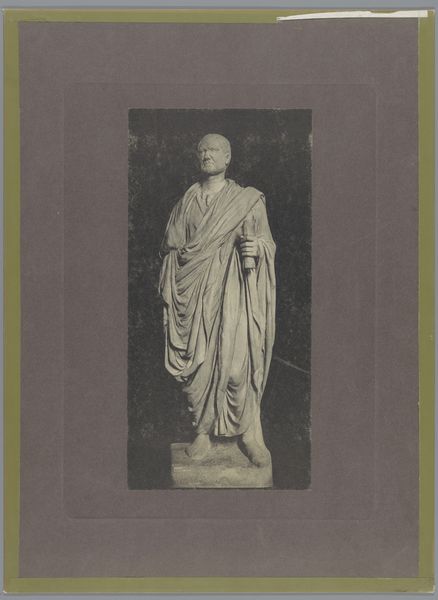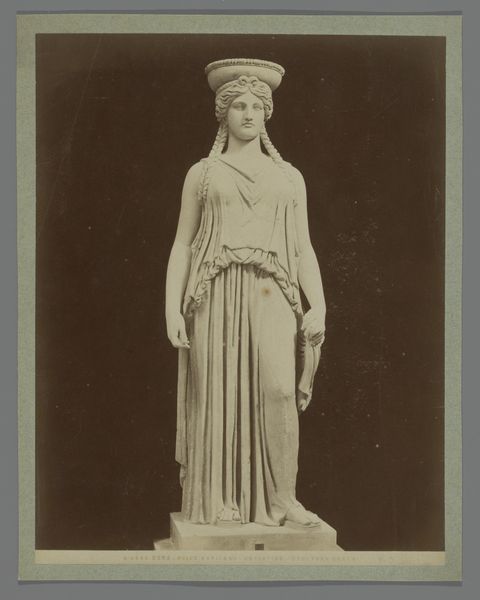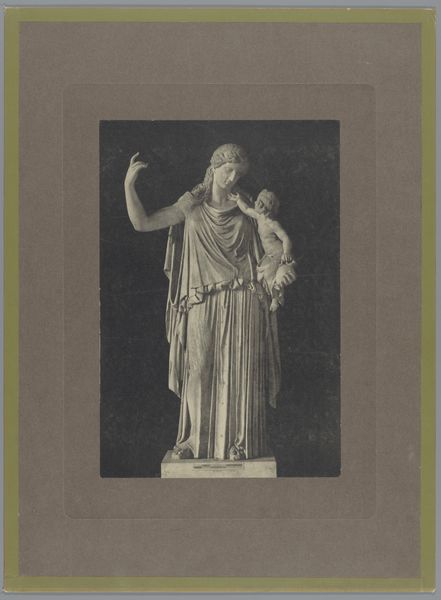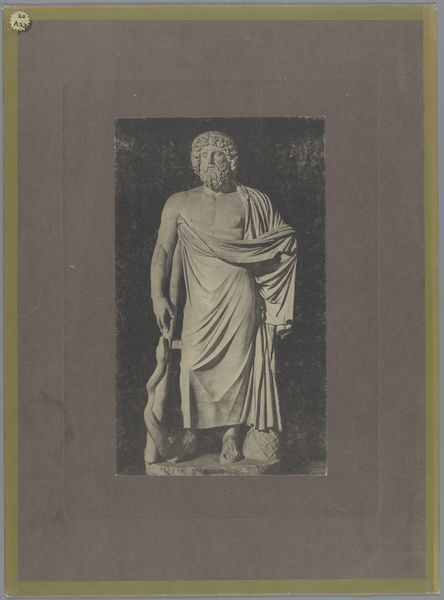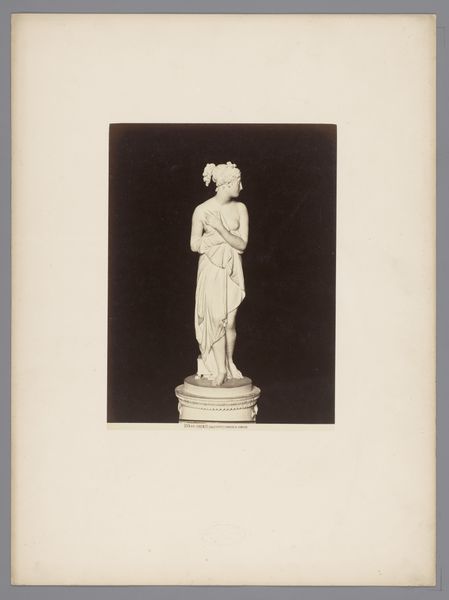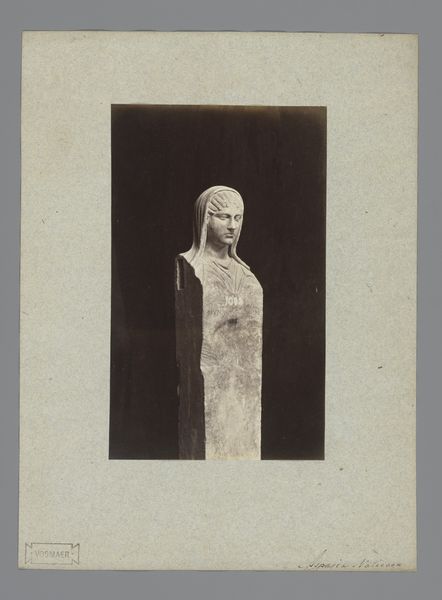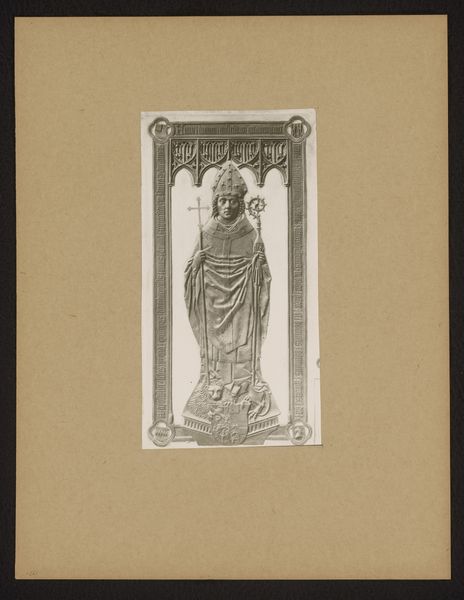
photography, sculpture
#
portrait
#
greek-and-roman-art
#
classical-realism
#
figuration
#
photography
#
ancient-mediterranean
#
sculpture
#
statue
Dimensions: height 382 mm, width 265 mm
Copyright: Rijks Museum: Open Domain
Curator: At first glance, the somber monochrome evokes a real sense of gravity, doesn't it? Editor: Indeed. This is a photographic print from 1896 depicting a Caryatid from the Erechtheion in Athens. We're presented with an enduring symbol of ancient Greece, but framed in the late 19th century. Curator: How interesting it is to see photography being employed to disseminate classical art and architectural forms! The reproduction process inherently alters the experience and meaning of such artwork. How accessible did this medium make the wonders of antiquity? And who was its target demographic? Editor: That's precisely the right question. Consider how the burgeoning middle classes of the late 19th century were being exposed to these symbols of "high culture." Photography served as a potent tool for shaping perceptions of historical art, disseminating it far beyond the elite circles who traditionally controlled access. Curator: We have to think about this object in terms of labor. The quarrying and carving of marble, the transportation, then its deployment as architectural support! Editor: Not to mention the complex politics surrounding these objects! Think about the colonial contexts in which archaeological finds were extracted and displayed in European museums. It is important to acknowledge this Caryatid and its origins and how we frame the images for our audience today. Curator: Good point. It pushes us to examine who gets to tell these stories. This photograph acts as a document in itself. It has been removed from its original architectural and cultural context and presented to us via the artist and the mechanical medium. How do we engage critically with images like this without reinforcing dominant narratives? Editor: Precisely! We must consider this photograph not as a neutral record, but as an artifact deeply enmeshed in social, cultural, and political history. I appreciate how looking at this photograph as a cultural product prompts discussions about art as a powerful instrument of history-making. Curator: Absolutely. And viewing this piece through that lens opens up questions around how art can and should function within society, even now. Editor: And from my perspective, that helps give the viewer a real appreciation for not just art and history, but for the structures behind their encounter with images and how knowledge is produced and distributed!
Comments
No comments
Be the first to comment and join the conversation on the ultimate creative platform.
